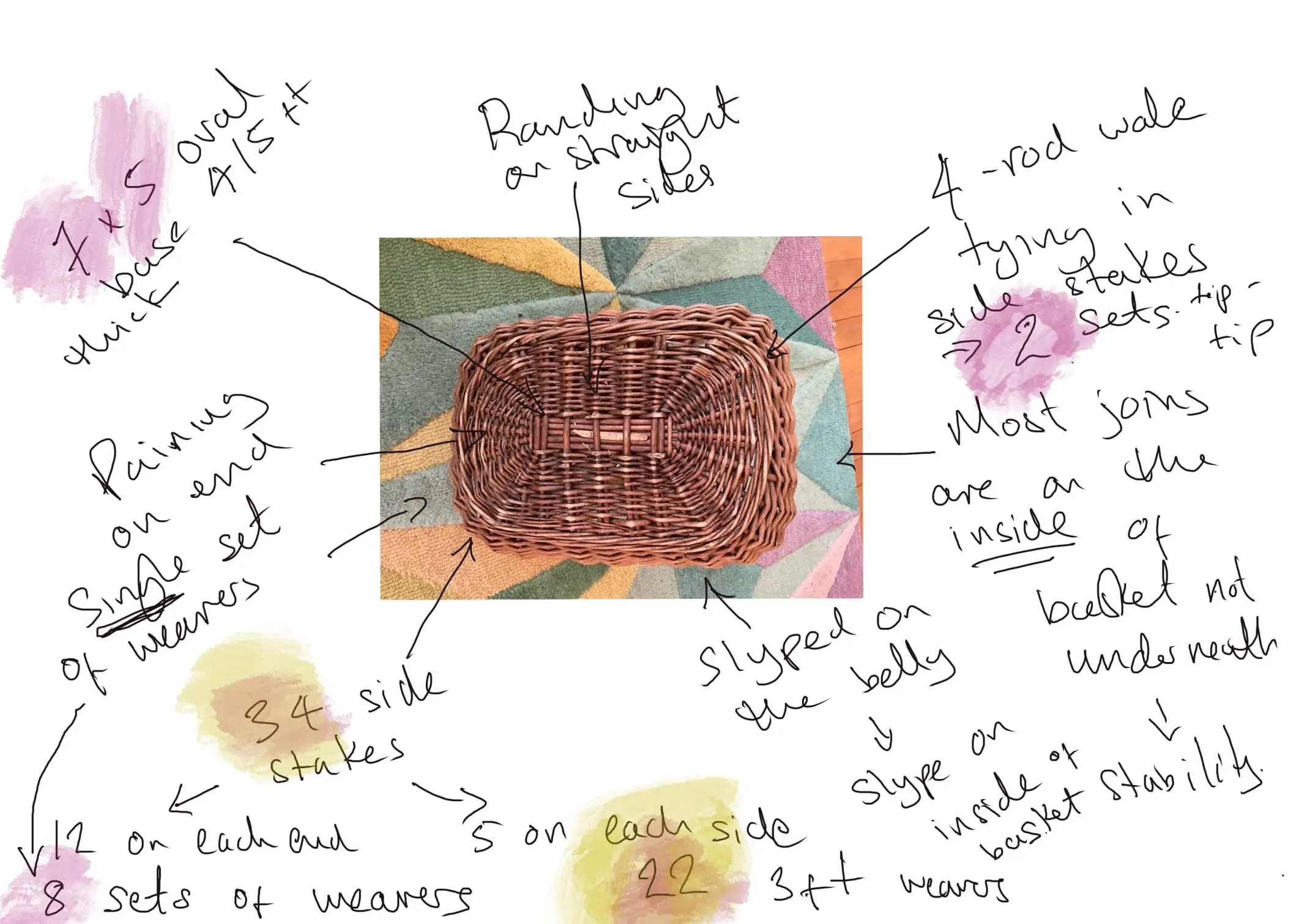
Unit 222: Traditional basket design development - base

Unit 222: Traditional basket design development - base
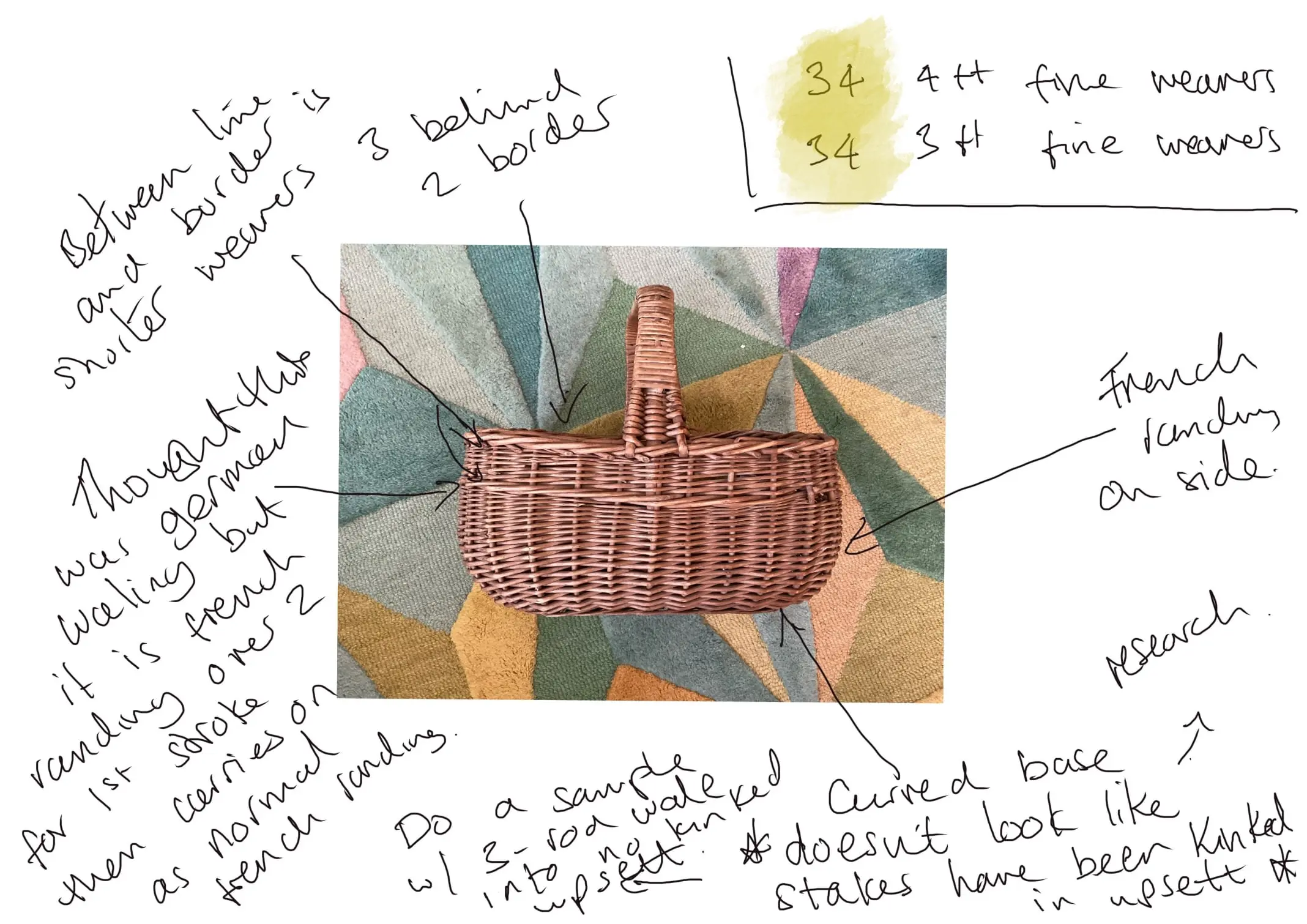
Unit 222: Traditional basket design development - sides
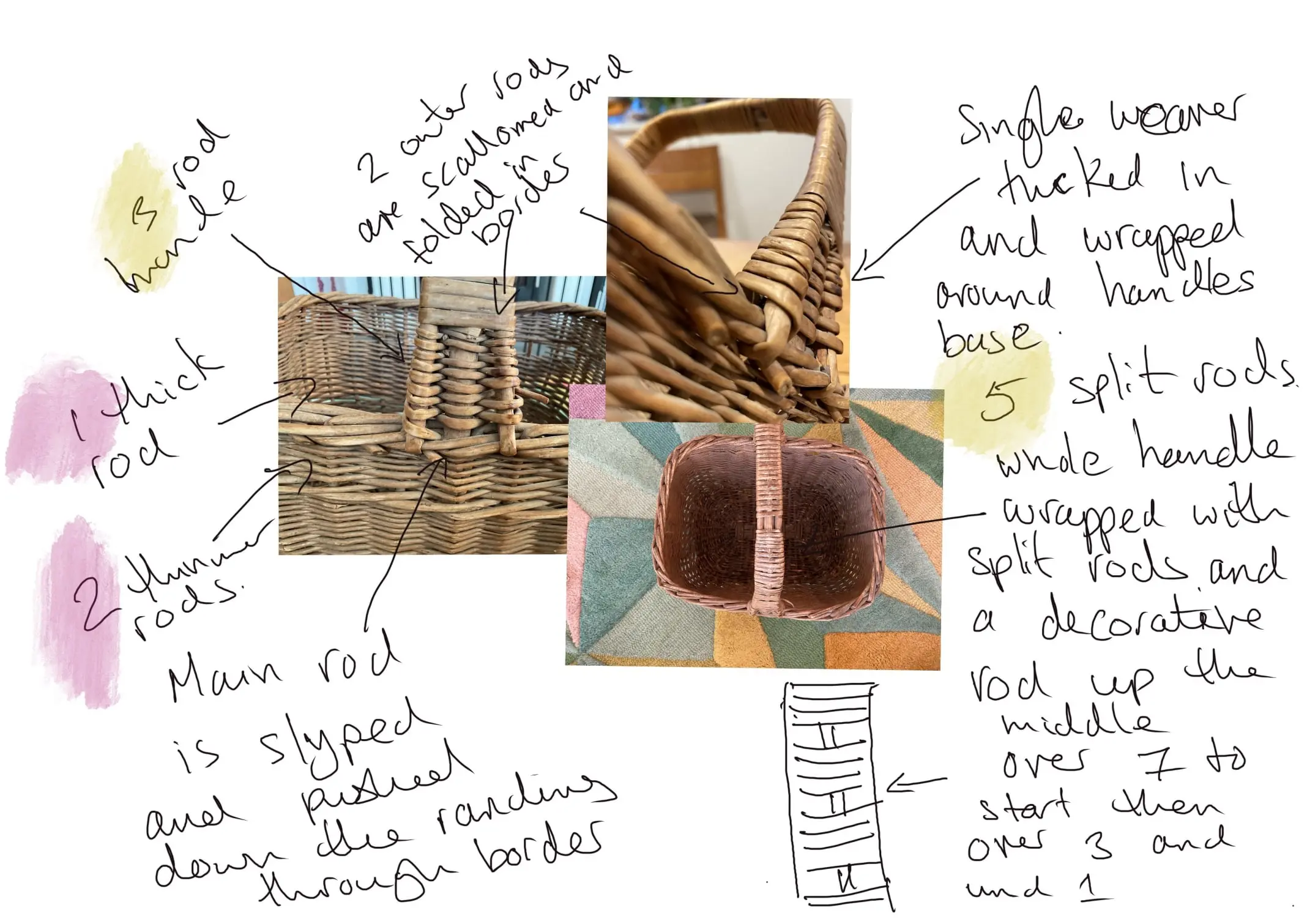
Unit 222: Traditional basket design development - handle
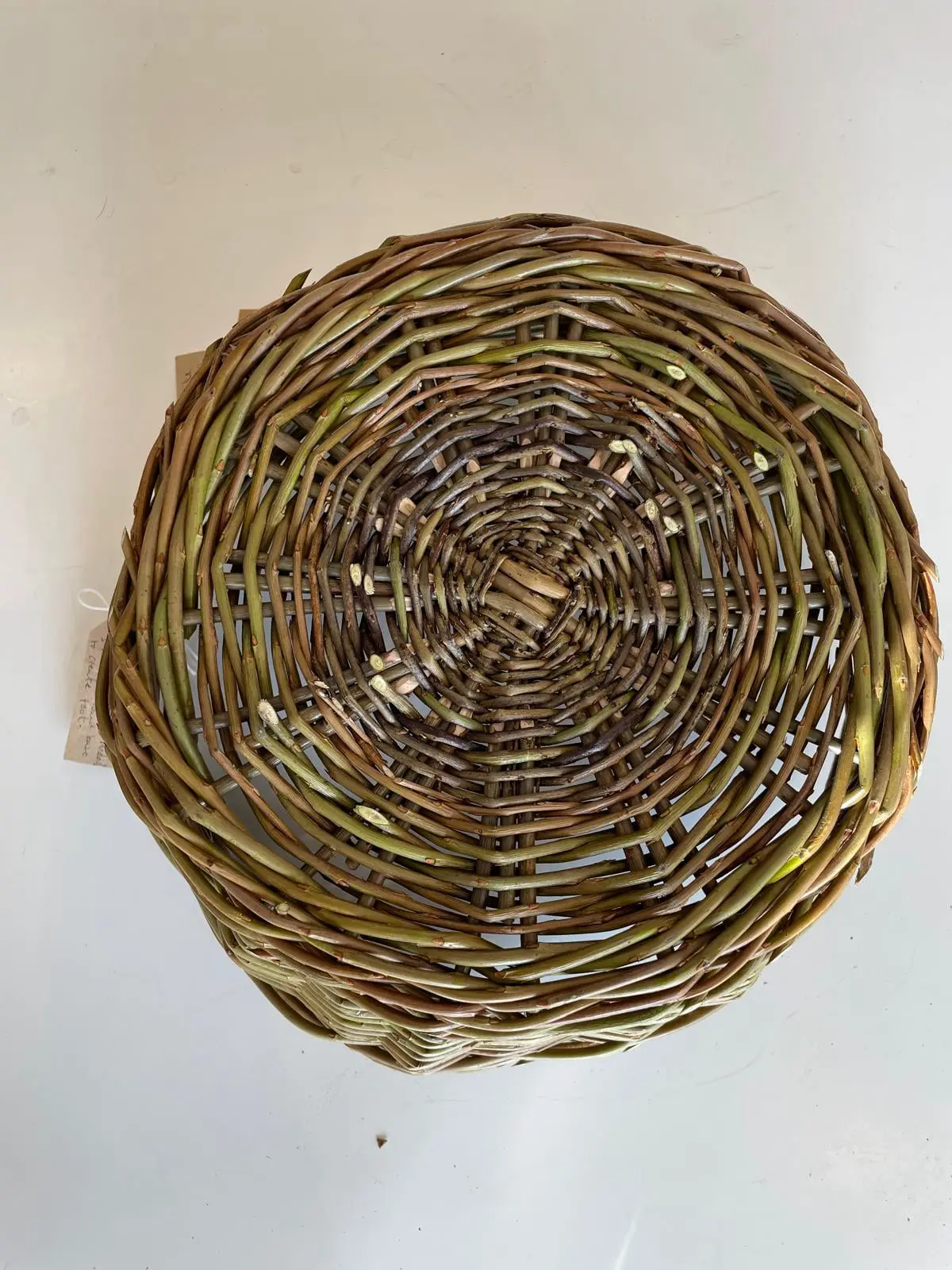
After considering the Acton Scott market basket, I attempted to recreate the base using the 4-rod wale. However, I went on to then prick the uprights when bringing up the basket so didn't get the rounded shape on the bottom. This came in really useful for the final basket as it meant that I had worked out how to do the bunny butt basket shape (and went on to make this the piece to show case a void handle). The base also uses a pairing weave.
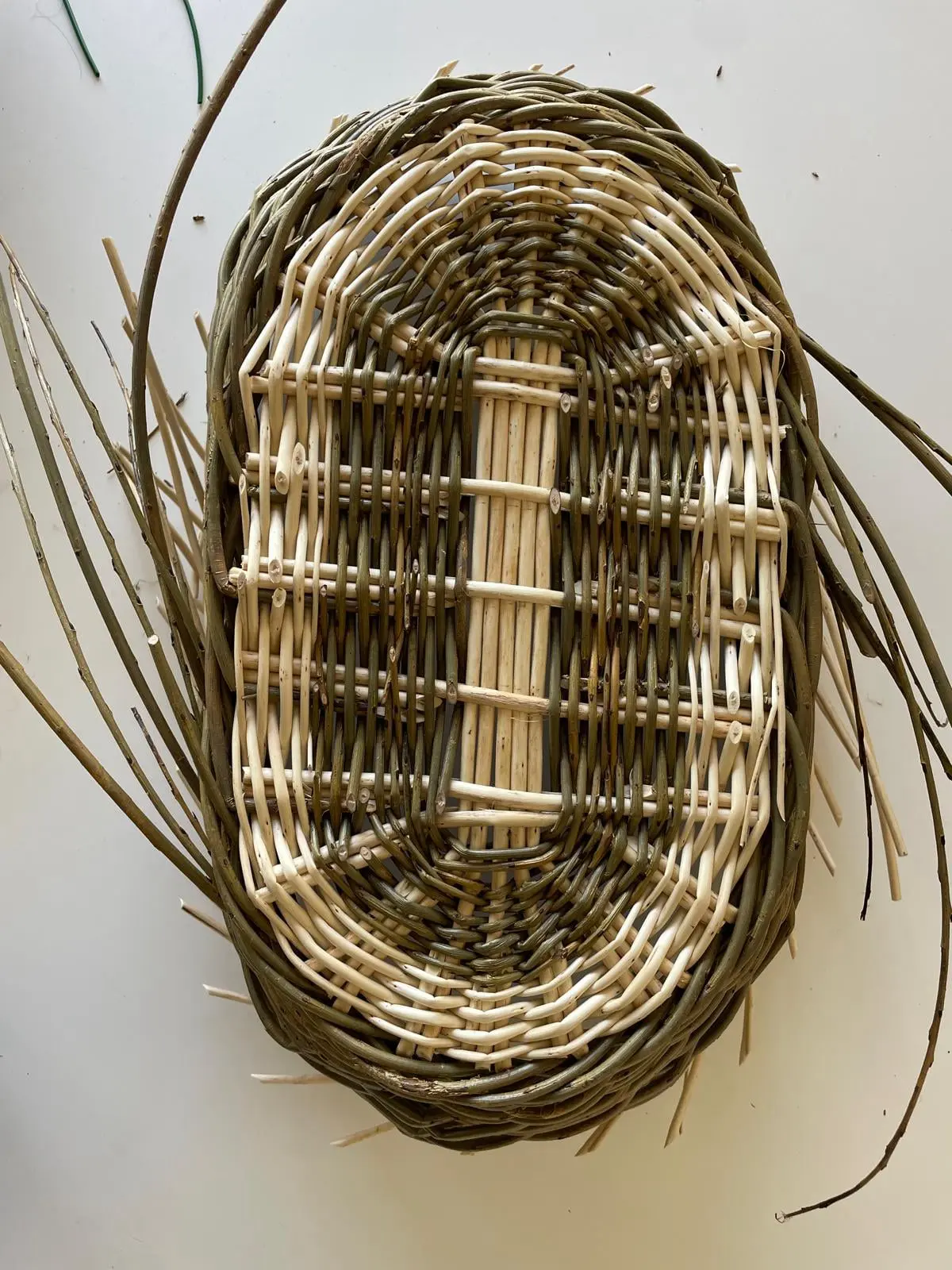
This is the oval base we learnt to do in class. The base escaped my control and went on to produce a basket that I was very unhappy with and do not know if I'll finish it as I don't want to waste the willow. However, I learnt how to make an oval base and, more importantly, what to keep an eye on so it didn't escape control and end up with an untidy, out of control basket at the end. The base also uses a pairing weave.
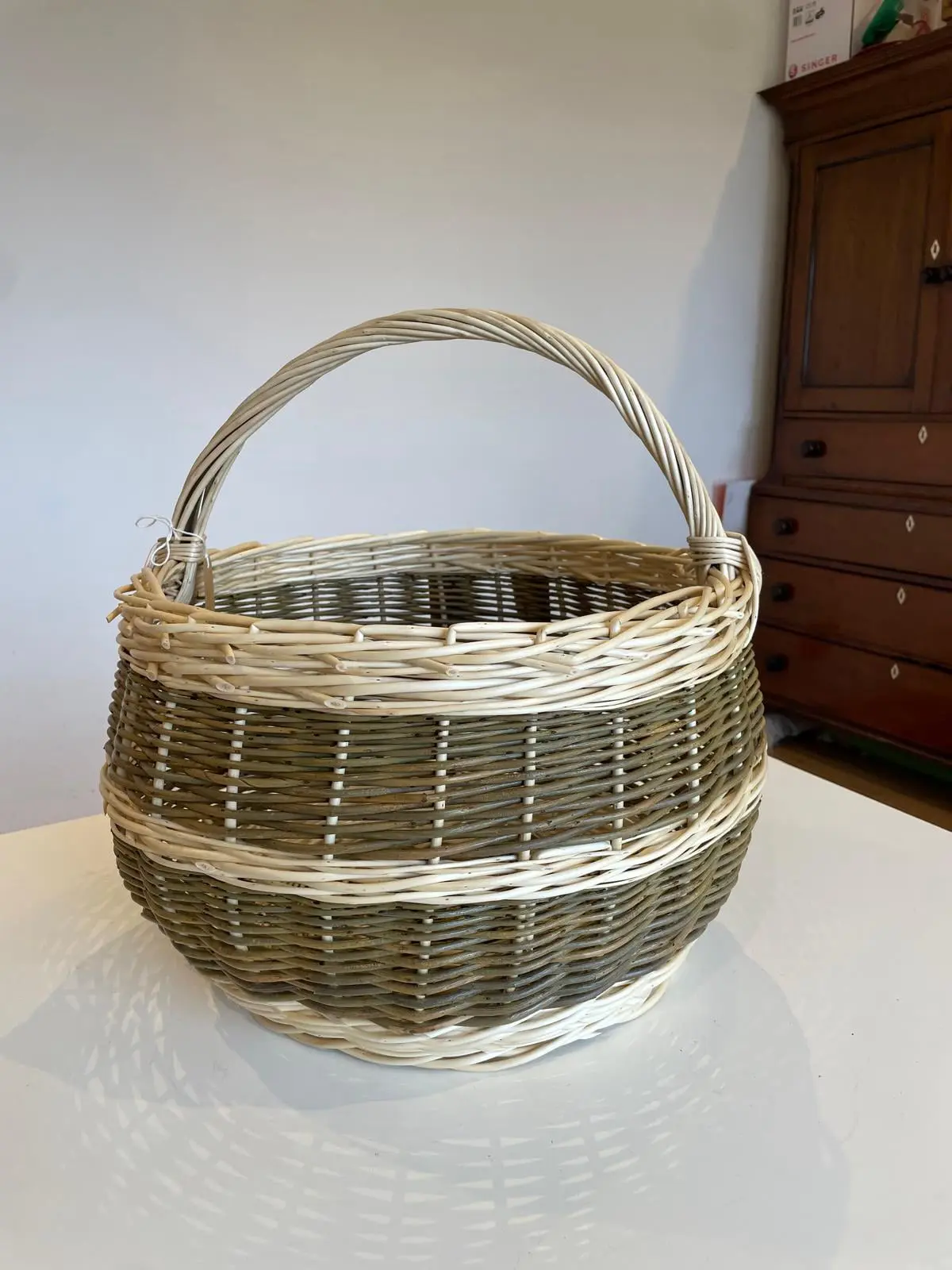
This was a shopper I made to learn how to put handles on. It uses French randing to build up the sides and has a twisted cross over handle with a herringbone finish.
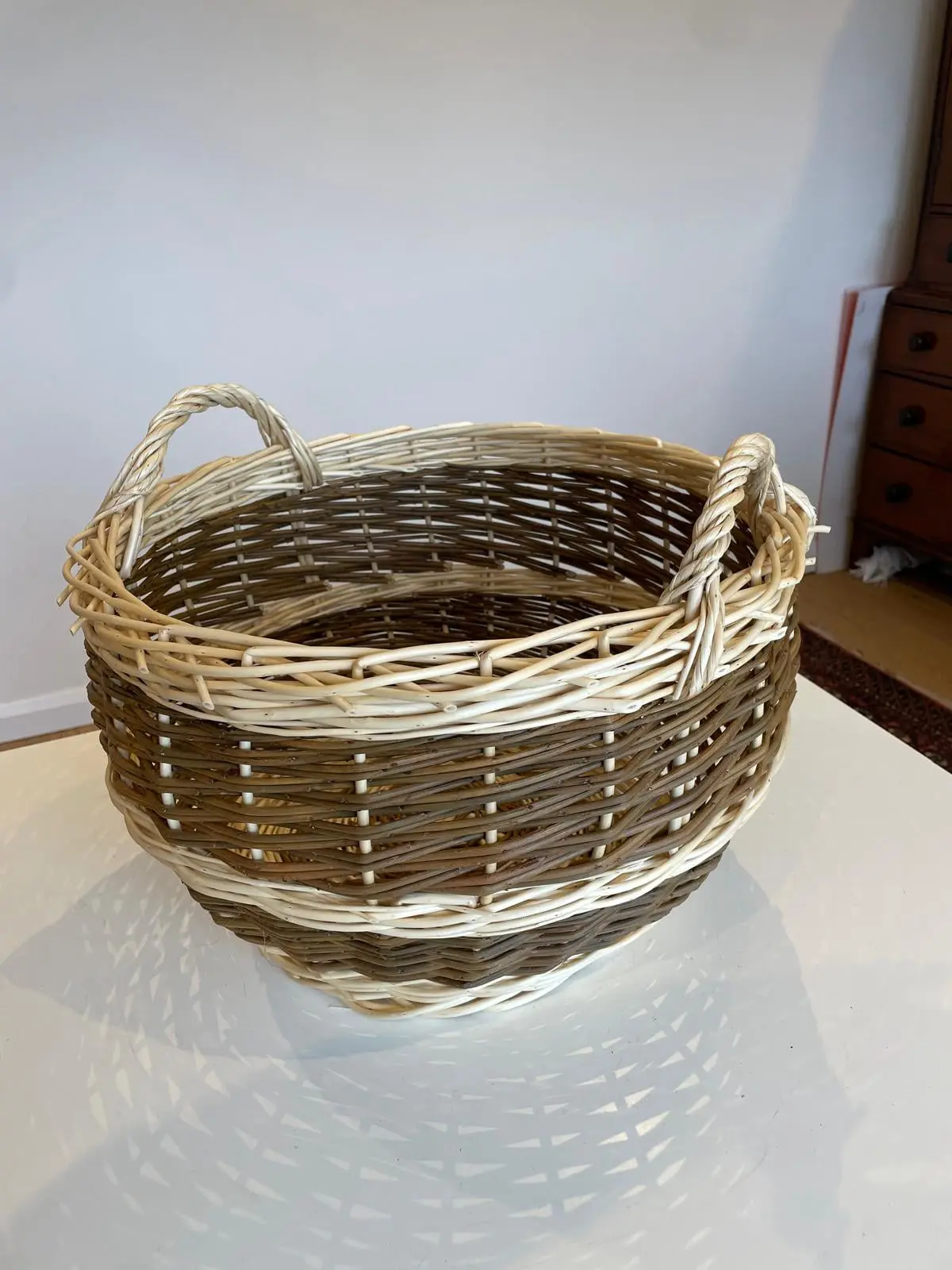
This is a kindling basket I made to learn how to put side handles on. I opted to crank the willow to get the rope like texture and was pleased with the result.
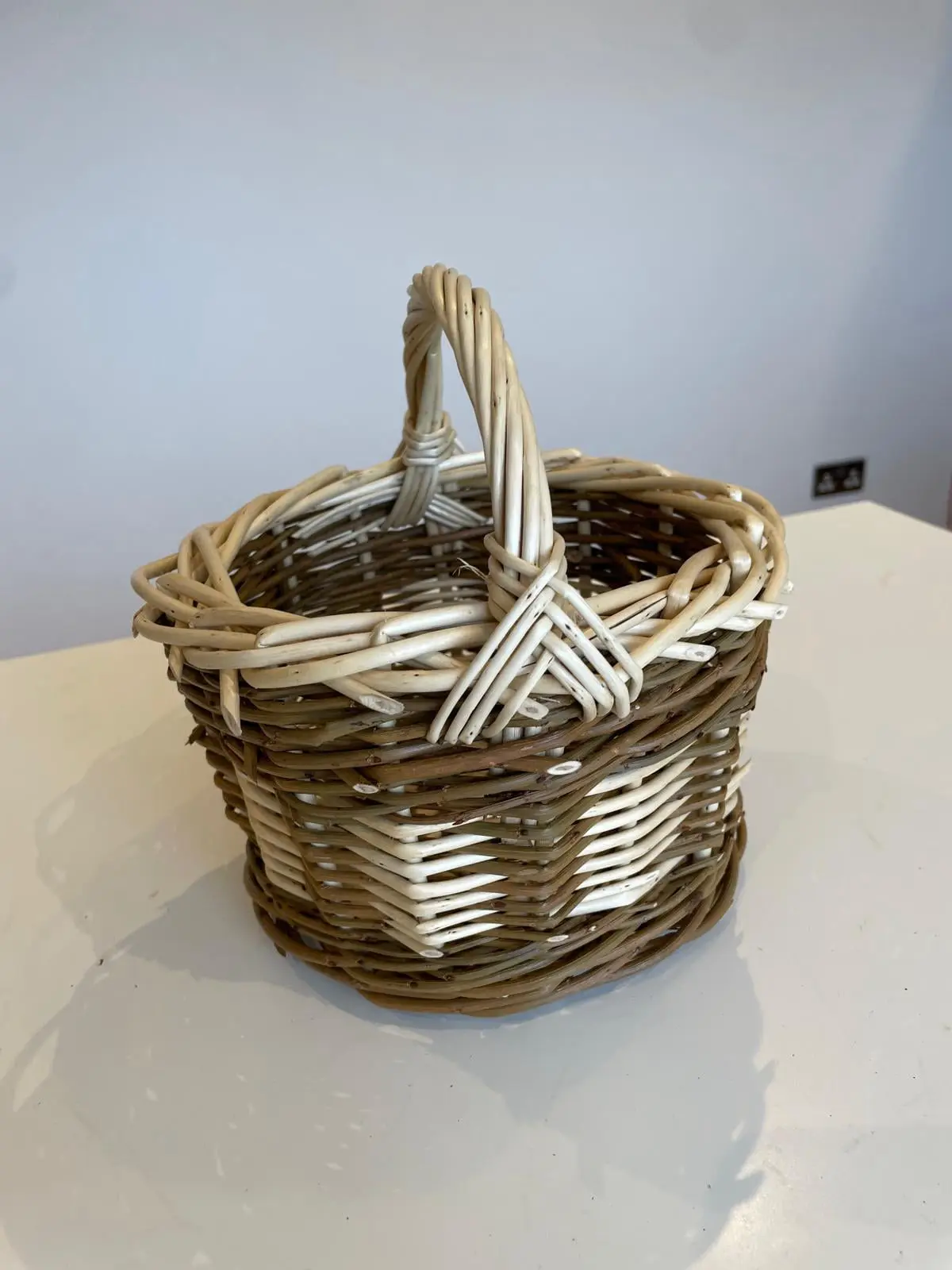
I made this little basket after the handle class to practice putting a handle on again. I used English randing on the sides and alternated the weaver colour which produced a great pattern but does hide the spiral effect of the English randing.
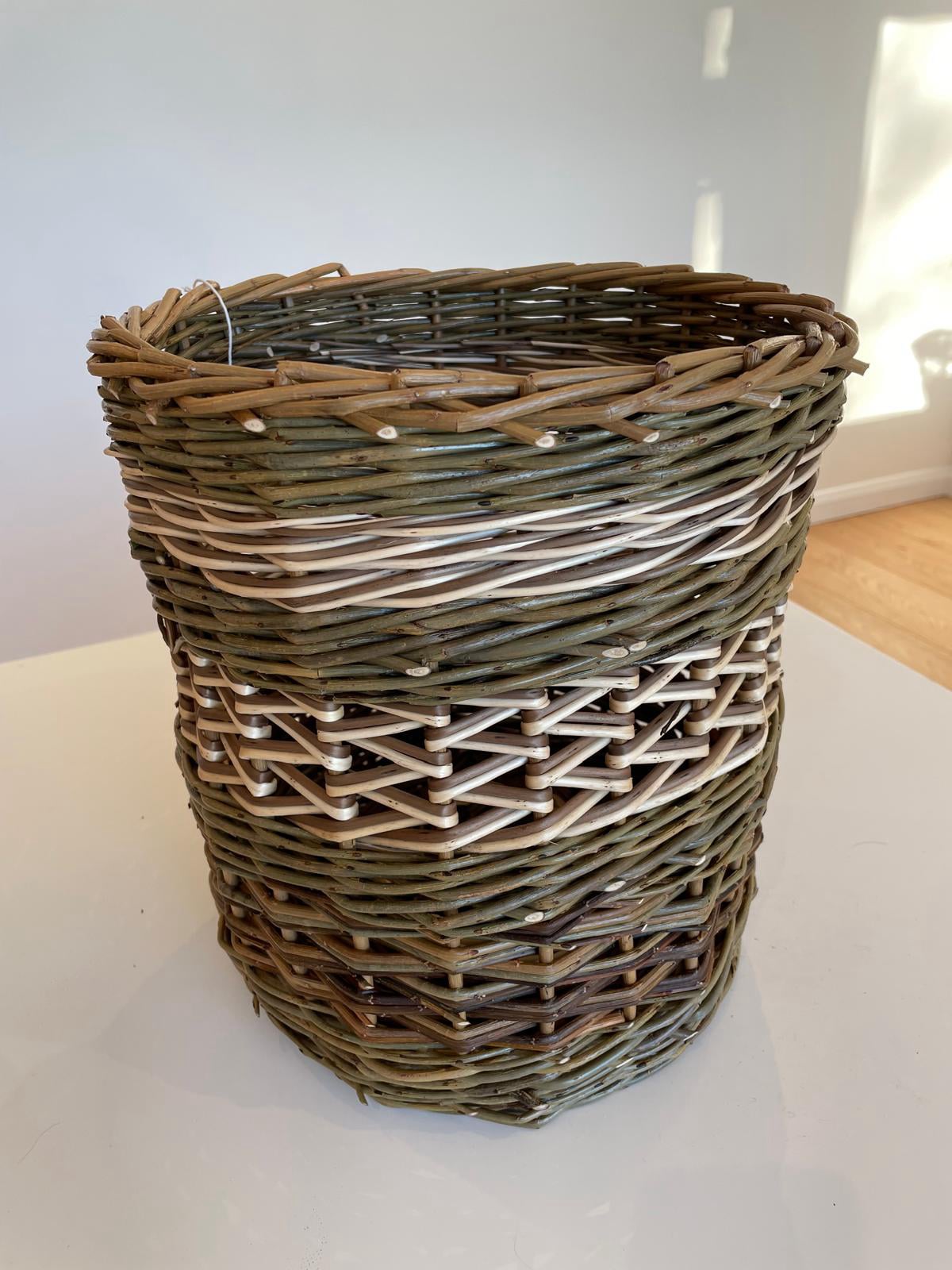
This basket is included here to demonstrate a slewing weave. The bottom section after the 3-rod wale upset is 3 rod slewing, which helps to build up a basket quite quickly and is also good for using up material.
Also shows a zig zag, double double French randing and 3-rod wale.
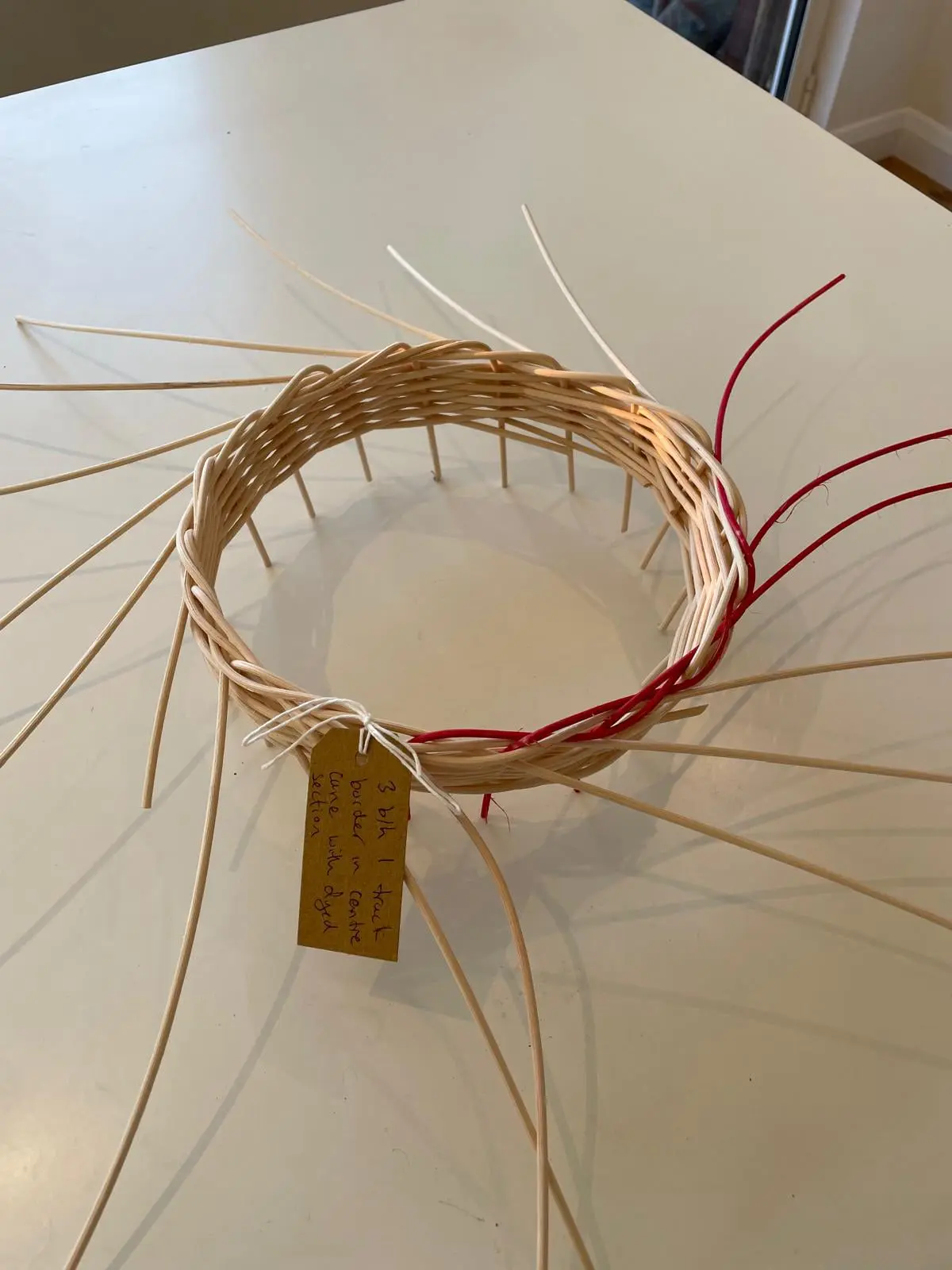
This was a center cane border with dyed red inserts to show the flow of the border. This was good practice to get the hang of the way borders finish.
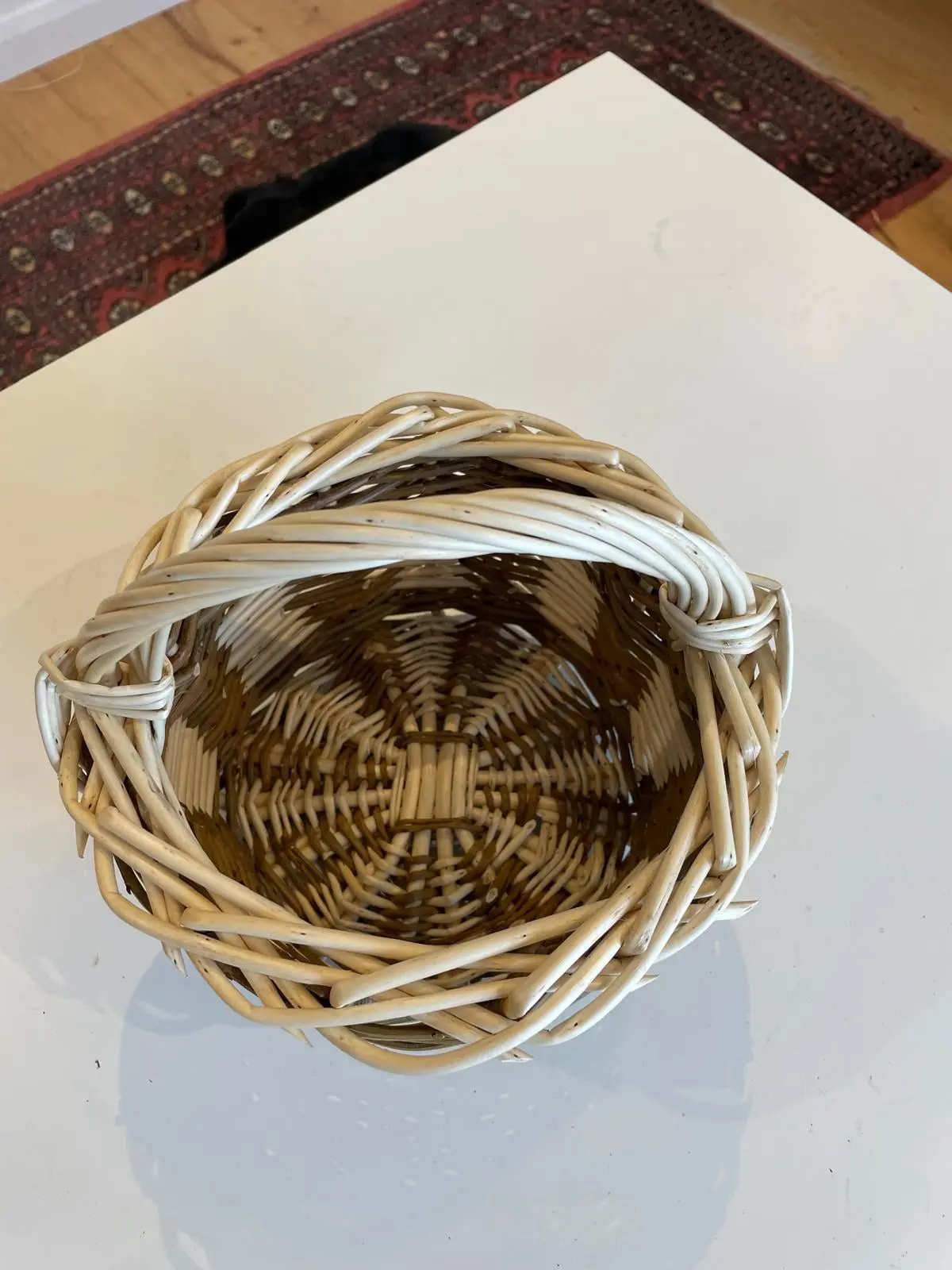
This was a center cane border with dyed red inserts to show the flow of the border. This was good practice to get the hang of the way borders finish. The end basket used a 3 behind 2 border.

I made this little pen pot out of scraps after making baskets for the handle class. I liked the effect of using different combinations of willow varieties to get a graduated colour scheme. It fed into the next basket I made...
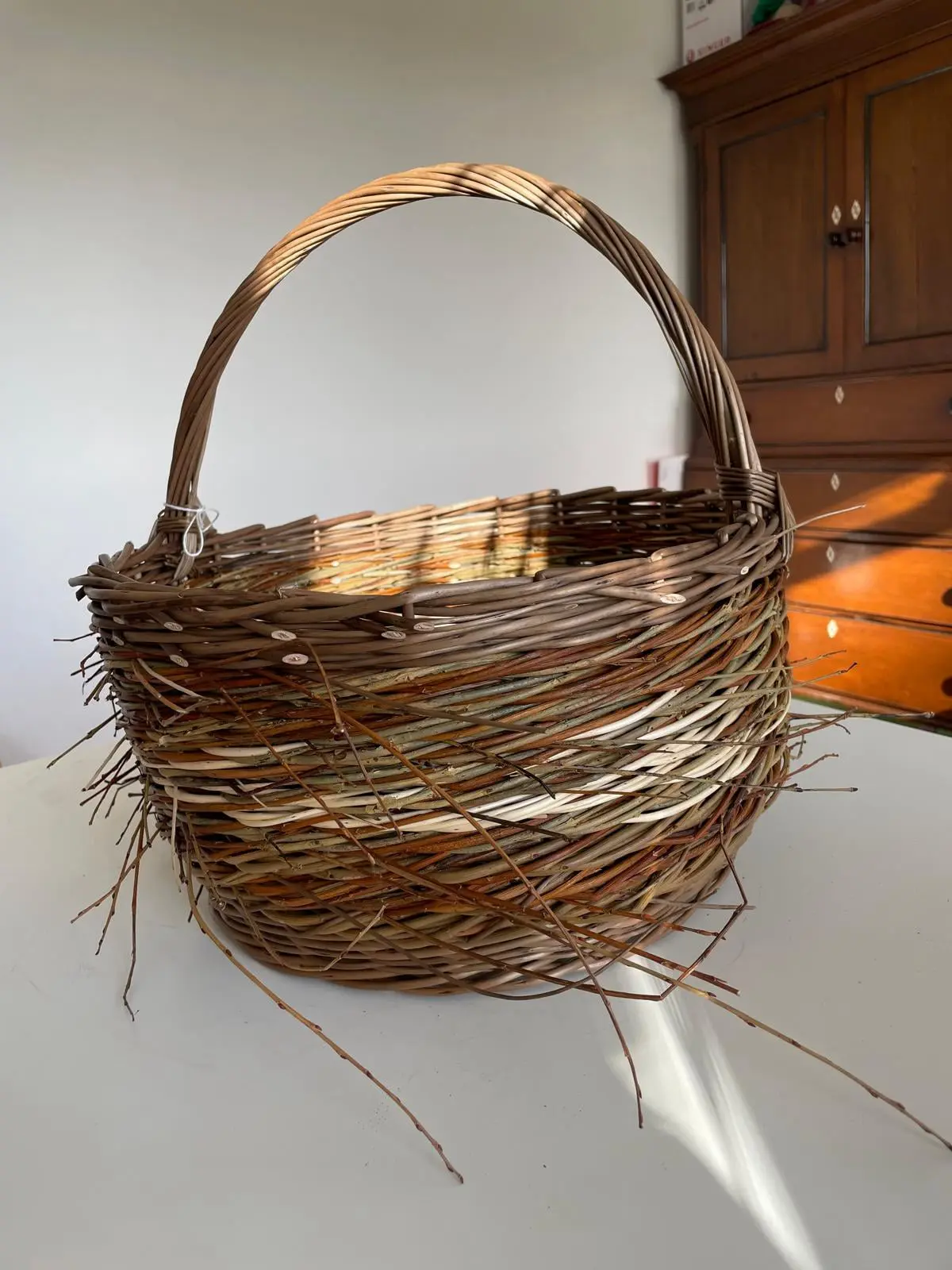
This basket combines different willow material to produce a random colour combination that shows off the natural colours of the willow. The weave is a rope weave which adds to the wild feeling of this basket, which is a traditional basket with a none traditional finish.
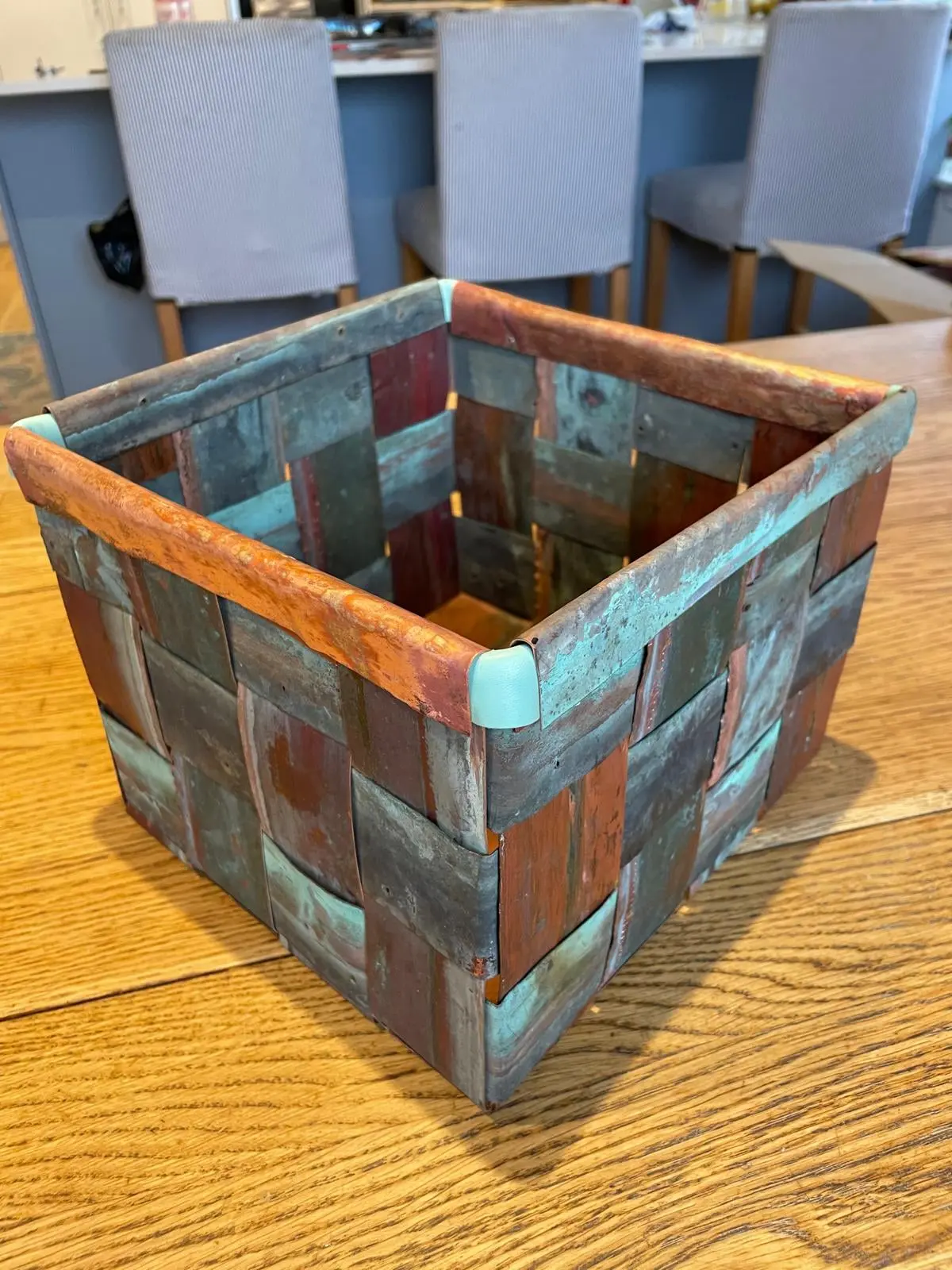
I made this basket for the Design Unit and it was a great experiment in combing materials and working with found material. The basket is made from reclaimed copper flashing from my house renovation and leather scraps. It is a plaited weave, altered a little to work with the copper.
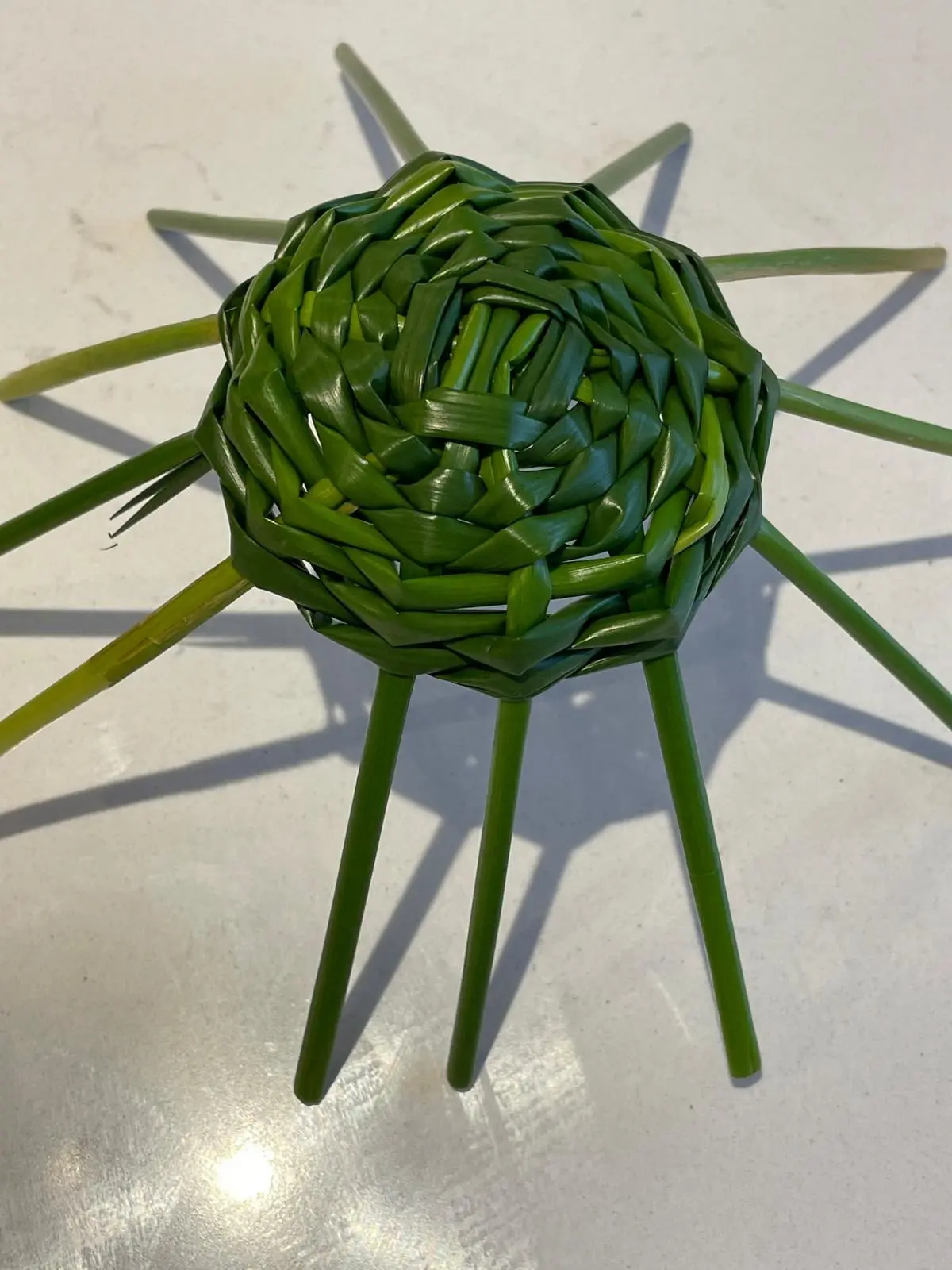
I made this base for the Design Unit from soft rush picked on a walk. As it dried it shrank a lot but I thought if it was dried out then it could be used to make a coiled or twined basket.